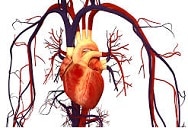The concept of hemodynamics is not part of the dictionary developed by the Royal Spanish Academy ( RAE ). The term that does appear is hemodynamics , defined as the study of the physical laws that are responsible for regulating blood pressure and flow .
 The notion of hemodynamics, however, appears in various contexts linked to health . This is the name given to the technique that uses catheters for the study of cardiac pathologies and the vascular system .
The notion of hemodynamics, however, appears in various contexts linked to health . This is the name given to the technique that uses catheters for the study of cardiac pathologies and the vascular system .
Hemodynamics, in this framework, allows us to analyze the mechanics of the heart and the blood dynamics in the capillaries, arteries and veins. The catheters are inserted into arteries in the arm or groin to find out the state of the blood vessels.
These catheters contain a contrast medium that makes them visible in radiological devices that use X-rays . Thus, the medical professional can observe the morphology of the heart and vessels and measure volumes and pressures , for example.
The hemodynamics service of a health center, therefore, is responsible for the application of this type of diagnosis or treatment techniques . The chambers of the heart and the heart valves can be studied in this way, as can the electrical activity of the organ.
It should be noted that the heart works as a pump that sends blood throughout the body through the aorta artery, where other arteries originate. If the coronary arteries become blocked by cholesterol buildup on the walls, blood flow is reduced and various problems occur. A complete obstruction, in fact, causes an acute heart attack. Through hemodynamics, it is possible to discover which artery is blocked and then develop the appropriate treatment.
In numerous hospitals in different corners of the world there are specific hemodynamic rooms with the clear objective of being able to carry out techniques and treatments in order to know the real state of the patients' hearts. Thus, for example, it is common for actions or interventions such as the following to be carried out in these spaces:
-Angiographies and ventriculographies, which are performed to know not only how the heart works but also how the pulmonary arteries and aorta are, as well as to discover if the valves are doing their job correctly.
-Catheterization, which is an invasive and complex process that allows you to study and understand the state of the heart as well as its functioning. Specifically, it is very common for this to be carried out in patients who have suffered a heart attack since it allows us to know what damage this situation may have caused them. It is important to know that the patient who undergoes this technique by inserting a catheter through the artery in the groin, once finished, must remain 24 hours without moving the leg.
-Coronary angiography, which is a technique that seeks to know if there are obstructions or narrowings of any type in the coronary arteries. In this way, the real status of the patient can be known and if those are detected, treatment will be given and the appropriate measures will be taken so that the aforementioned arteries function properly.
In addition to all of the above, we have to emphasize that coronary angiography is considered complementary to catheterization.
